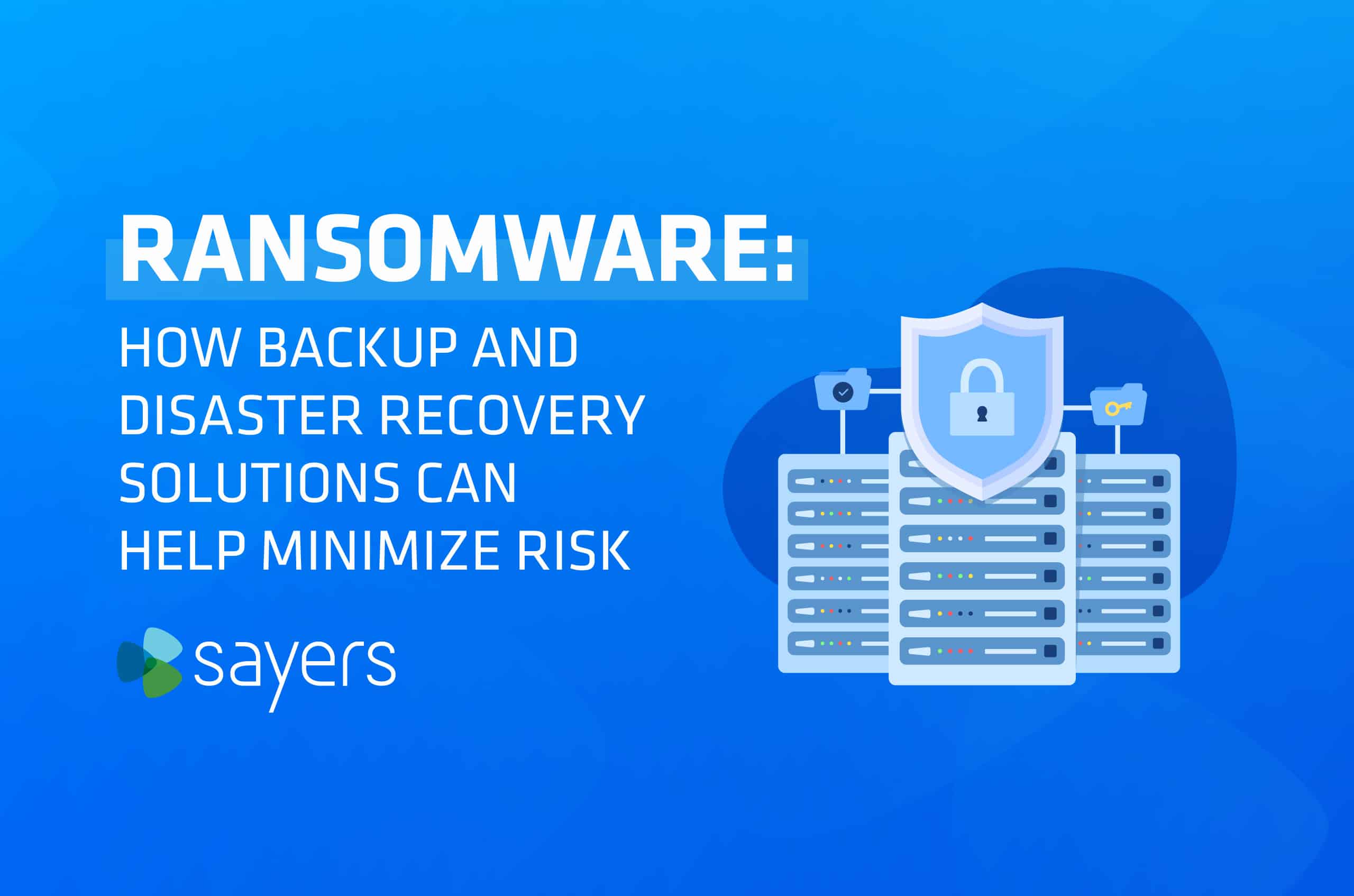Recovery Solutions to Reduce Ransomware Risk
Posted March 31, 2022 by Sayers

It’s no secret that hackers and data thieves are becoming more creative with their breaching efforts. Whether it’s a cleverly disguised phishing email or troublesome malware, data thieves constantly look for new ways to get sensitive information.
Another technique that is used quite often by these thieves is ransomware. According to the New York Times, ransomware attacks increased by 41% in 2019. In 2021, the projected, ransomware attacks are estimated to cost $40 billion dollars worldwide—this according to a Cybersecurity Ventures study.
Cybersecurity is a department that businesses are investing more and more into. Not only are improved hacking techniques making it a necessity to bolster cybersecurity, but there is so much data that businesses must secure at all times. Big data affects just about every company today, and cybersecurity measures must be taken seriously because of this.
Today we’ll be focusing on what companies can do to combat ransomware attacks and how they can minimize their risk of ransomware altogether. But first, let’s discuss what ransomware is and why it can be so dangerous.
What is Ransomware?
Ransomware is a type of software used by hackers to infect computers, with the end goal typically being to lock the computer up and render it disabled. When a computer is infected with ransomware, the user will typically receive an email or pop-up explaining that, if they want to regain control of their computer, they need to pay a specific amount of money (or a ransom).
There are two main types of ransomware. First, there is ransomware that actually does lockout users from their computers and potentially can spread throughout the network. When this occurs, companies can expect the ransom to be fairly high—especially if the hacker knows how detrimental it can be for the businesses to be locked out of their network. For example, if a ransomware hacker ever infected a bank’s network, which could have devastating consequences.
The other type of ransomware is scareware, which is typically more common because it isn’t actual ransomware. Instead, it comes in the form of fake antivirus software and a message that claims the computer has a virus, but in reality, nothing is wrong with it. When this is the case, the message will request a smaller amount of money to clear the computer of the “virus.”
In terms of how the ransomware works, it can act as spam with pop-up alters appearing constantly. In other situations, the computer will fail to work at all. Sometimes, files or documents on the computer can be locked in encrypted files, ensuring that the only way to get access back is by paying the ransom.
So, how exactly do businesses protect themselves from ransomware? Specifically, how can you avoid having to pay the ransom at all?
Backup and Recovery Solutions Are the Key to Fighting Ransomware
Luckily, there is a way to fight back against ransomware. But, to give your business the best shot at combating it, you need to be prepared. This includes integrating preventative measures to ward off attacks in the first place. But, and perhaps even more importantly, you need to also have a backup and disaster recovery process in place.
First and foremost, preventative measures should always be taken to ensure that outside parties cannot gain access to your computers and network. But, sometimes, these preventative measures aren’t enough, and a hacker may slip through with threats of ransomware.
For this reason, it is of paramount importance that backup and recovery solutions are implemented consistently throughout your organization. By utilizing cybersecurity best practices in regards to backing up your data, you can avoid dealing with the hacker at all.
For example, suppose a ransomware software were to get ahold of several of your employee’s computers through a phishing scam, instead of waiting for a third-party provider to come in and break through the encrypted files or paying the hacker the amount of money they want. In that case, you can simply refresh the backed-up data.
Your business continuity plan should heavily involve backup and recovery solutions. By doing so, you can avoid paying extensive ransoms to gain back control of your data.
If you don’t have proper disaster recovery solutions in place, the time to start preparing is now. No matter the size of your business or the industry your company resides in, today, everyone needs to make sure they have plans in place to deal with cyber attacks.
If you’re interested in learning how Sayers can assist you in your cybersecurity efforts and effectively prepare you for a ransomware attack, reach out to us today.


